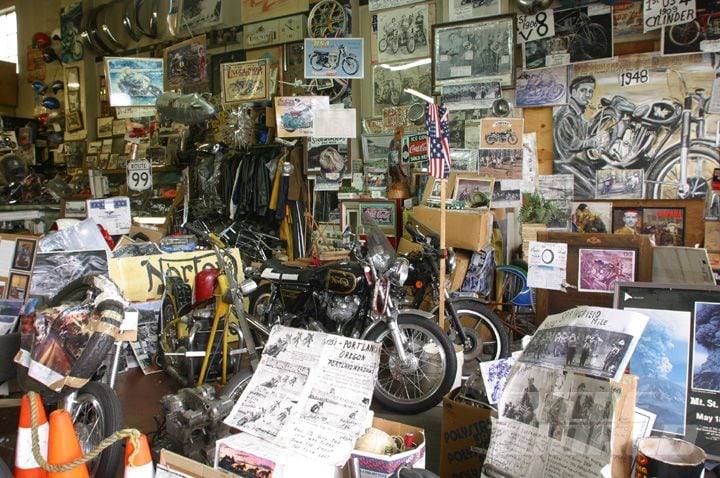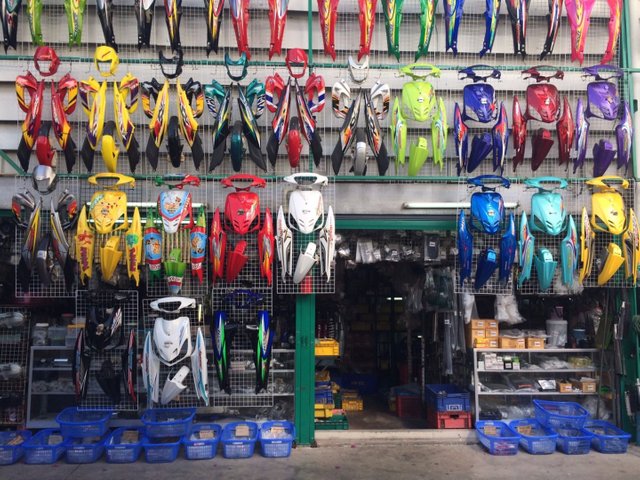Must-Have Motocross Gear: Raise Your Riding Experience Today
Must-Have Motocross Gear: Raise Your Riding Experience Today
Blog Article
Understanding the Important Parts of a Bike: A Comprehensive Guide for Lovers
For motorcycle lovers looking to raise their riding experience and guarantee their bikes run efficiently, recognizing the important components of a motorcycle is paramount. Each aspect, from the engine's detailed workings to the important duty of the stopping systems, not only affects performance yet also safety and security and comfort.
Engine Components

The camshaft plays an important role in managing the timing of the engine's valves, making sure the exact opening and closing necessary for effective gas and air intake, in addition to exhaust expulsion. This timing is crucial to preserving optimum engine efficiency and performance. Furthermore, the carburetor or gas shot system, depending on the bike model, is accountable for blending air with fuel in the correct ratio for burning.
The cooling system, either air or liquid-based, works to preserve the engine's temperature level within operational restrictions, preventing overheating and making sure long life - motorcycle shop. Each element, thoroughly made and incorporated, adds to the seamless procedure of the engine, specifying the motorbike's power result and overall performance
Transmission System
Essential to the motorbike's performance, the transmission system ensures efficient power transfer from the engine to the wheels. This system comprises several vital parts, consisting of the clutch, transmission, and last drive, each playing a vital duty in equating the engine's power right into activity. The clutch, generally run by a hand lever, offers to involve and disengage the engine from the transmission, permitting smooth equipment adjustments and regulated velocity.
The gearbox, usually referred to as the transmission correct, consists of a set of equipments that bikers can manually change with to change the bike's speed and torque result. These equipments are prepared in a series that makes it possible for the motorbike to accelerate smoothly and maintain optimum engine efficiency across various speeds. The majority of bikes use a sequential transmission, needing the biker to change equipments in an established order.
Braking Systems
While understanding the transmission system is vital to taking advantage of a motorbike's power, similarly important is the capacity to manage and quit that power effectively, which is where stopping mechanisms enter into play. Brakes are important for safety and performance, offering the biker with the necessary control to browse different surfaces and problems. Typically, bikes feature 2 kinds of braking systems: disc brakes and drum brakes.
Disc brakes are more common in modern-day motorcycles due to their premium performance. This system provides much better warmth dissipation, regular performance, and boosted quiting power, particularly in damp conditions.
On the other hand, drum brakes, though much less common, are still discovered in some bikes. They function by pushing brake shoes versus the internal surface area of a drum affixed to the wheel. While generally much less effective in heat dissipation and stopping power, visit this site right here drum brakes are simpler and extra affordable.
Recognizing these stopping systems' subtleties allows bikers to preserve their motorbikes appropriately and value the engineering that ensures effective and secure quiting.
Suspension and Guiding
Suspension and steering systems are essential elements that substantially affect a motorbike's handling and experience convenience. The shock absorber, consisting of forks at the front and shock absorbers at the rear, takes in roadway irregularities, enhancing stability and control. Front forks, inverted or generally telescopic, compress and rebound to reduce effects, while back shock absorbers preserve tire call with the road, vital for grip and safety and security.
Guiding, centered around the handlebars, attaches the cyclist to the bike's directional control. The steering head bearings guarantee smooth operation, enabling accurate maneuverability. Correct positioning and maintenance of these bearings see this are critical for foreseeable guiding reaction and lowering cyclist exhaustion.
The suspension's adjustability is an additional important facet; preload, damping, and rebound settings enable customization to match various riding conditions and styles. This adaptability is vital for maximizing efficiency, whether navigating city streets or taking on sturdy tracks. Innovations like digital suspension systems use real-time modifications, boosting experience high quality throughout diverse terrains.

Electrical Equipments
After making certain a smooth and regulated ride via effective suspension and steering systems, focus turns to the electrical systems, a crucial aspect of modern motorbikes. These systems play an important function not only in beginning the engine however additionally in powering various components that enhance the functionality and safety and security of the motorcycle.
At the heart of a motorbike's electrical system is the battery, which shops electrical power essential for starting the engine and powering complementary systems - motocross parts nz. The alternator or generator, paired with the rectifier-regulator, guarantees the battery stays billed while the motorcycle is in operation, converting mechanical power into electrical power and preserving voltage degrees
The ignition system, an additional vital element, is in charge of igniting the air-fuel mixture in the engine's cyndrical tubes. Modern bikes often utilize an electronic ignition system, providing greater performance and integrity compared to traditional systems.
Lighting systems, including headlights, tail lights, and indications, are likewise crucial, making certain presence and safety and security for the biker. Additional electronic components such as sensors, control informative post units, and presents add to sophisticated features like fuel shot monitoring, anti-lock braking systems (ABDOMINAL), and digital control panels, even more enhancing the riding experience.
Verdict
A thorough comprehension of a motorbike's vital components, including the engine, transmission system, stopping mechanisms, suspension, guiding, and electric systems, is essential for enthusiasts intending to optimize comfort, safety and security, and performance. Mastery of these aspects enables notified choices regarding upkeep and upgrades, eventually boosting the riding experience. By integrating this understanding, riders can guarantee their motorcycles operate at peak performance and reliability, consequently making best use of both enjoyment and longevity of their cars.
For bike enthusiasts looking to raise their riding experience and guarantee their bikes run smoothly, understanding the essential elements of a bike is paramount.Essential to the motorbike's capability, the transmission system guarantees effective power transfer from the engine to the wheels.While recognizing the transmission system is vital to harnessing a bike's power, equally essential is the capability to manage and stop that power successfully, which is where stopping devices come into play. Commonly, motorbikes feature two types of stopping systems: disc brakes and drum brakes.
A complete understanding of a bike's essential components, including the engine, transmission system, stopping systems, suspension, steering, and electrical systems, is essential for lovers intending to maximize comfort, performance, and security.
Report this page